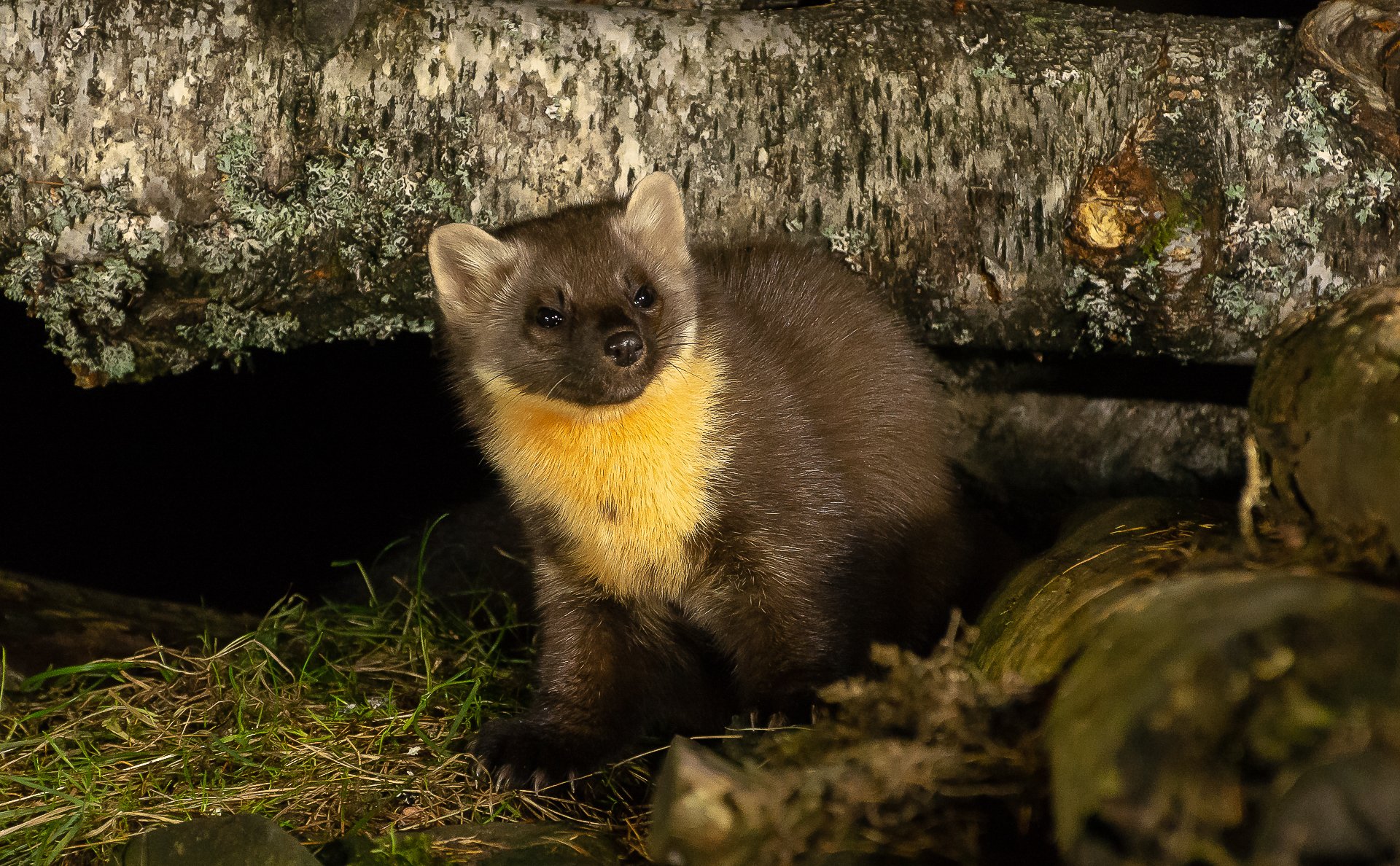Mammals
Many of Scotland’s wild mammals can be difficult to see, as they’re cautious of people and will disappear the moment they spot, smell or hear you. Many are also nocturnal, making them even more of a challenge to watch.
The mammals of Scotland’s rainforest are no different, and while you have a good chance of hearing birds and seeing flowers, insects and lichens while walking in the woods (depending on the time of year…), it’s possible to go a great distance without spotting so much as a mouse.
But even if you don’t see them, you can look out for signs that mammals were there by watching for chewed nut cases and pine cones, as well as droppings and burrows.
Red squirrels
Red squirrel numbers dropped alarmingly in the last century. Today, they’re often thought of as being very rare in the UK, and restricted mostly to the Caledonian pineforest. But red squirrels can actually be seen pretty much anywhere in the ‘rainforest zone’ as long as there’s suitable habitat for them.
Pine forests, like Ben Shieldaig, often hold the largest populations, but they live in broad-leaved and mixed woodlands as well. However, you won’t see them everywhere. Because their populations were historically so restricted, and because the rainforest itself is so fragmented, there are many areas of woodland where there are no red squirrels at all.
You may sometimes see grey squirrels in the rainforest, but these are non-native and invasive, and carry a disease that threatens the reds. If you do spot a grey squirrel (or a red), you can report it here: scottishsquirrels.org.uk/squirrel-sightings/
Pine martens
As they’re a shy and mostly nocturnal animal, you may never see a pine marten, even if you live next door to them! But you can sometimes catch a glimpse of them running around in the trees, or crossing a path or road in front of you. Young ones can be inquisitive, however, and lucky encounters with whole families in the summer are not unheard of. Adults often learn to take advantage of human food sources as well, particularly nuts left out for birds and red squirrels.
Pine martens are quite chunky animals, but they’re at home in the trees, where they hunt for birds, birds eggs and red squirrels (when they can catch them). They’ll also take grey squirrels, and may even be helping to control the grey population in some areas.
Roe deer
Roe deer are much smaller than red deer, and they’re also more widespread. You might even spot them in built-up areas. They’re often seen singly, or in small groups, feeding on grassland close to a woodland edge, or hiding amongst the trees. They’re most active around dawn and dusk, but can be seen out during the day as well.
Males have short antlers, and both males and females have pale patches on their rumps, which are most obvious when you see them running. They have a call like a barking dog, and can be particularly noisy around their rutting season, which is in late summer.
There can be very high populations of roe deer in areas of rainforest. Added to native red deer, non-native species like sika and fallow deer, and feral animals such as goats and sheep, this puts huge pressure on the woodlands and can stop trees regenerating.





